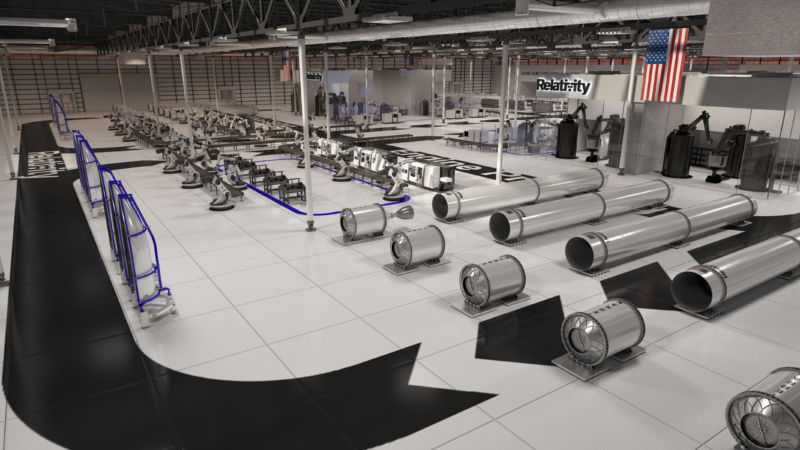
Relativity Space has signed an agreement with NASA to convert a large industrial building in southern Mississippi into what may become the world's first autonomous rocket factory. The factory is conveniently located just two miles from where Relativity plans to test engines and stages for its Terran 1 rocket.
Building 9101 at Stennis Space Center encompasses 220,000 square feet of factory facilities, which is greater than the combined area of three American football fields. NASA inherited the space from the US military about 20 years ago but has not used it. The property also includes multiple bridge cranes, which is useful for moving large aerospace parts around, and an 80-foot-high bay for the vertical integration of rockets.
"This building will be a long-term enabler of our vision," said Jordan Noone, co-founder and chief technology officer for Relativity. Based in Los Angeles, the company aspires to use 3D printing, machine learning, and automated technologies to build rockets at a lower cost in days or weeks instead of years.
The nine-year lease, which includes options for extensions, came at a "very low cost" said Noone. The state of Mississippi also offered an incentive package because the company says it will bring high-paying, high-tech jobs to the region. Over the next five years, Relativity will invest $60 million in infrastructure and grow its on-site team from 10 employees—presently engaged in engine and stage testing at a Stennis facility—to 200 workers.
Looking ahead to 2020
For Relativity, beyond the incentive package, the reason to choose Stennis was clear. Instead of building a large production facility from scratch, Relativity can begin modifying an existing building immediately and move in during the next several months. In an interview with Ars, Noone and Tobias Duschl, vice president of operations at Relativity, said the Mississippi factory will begin printing rocket components later in 2019. Over the next five years, the company will likely install up to a dozen 3D printing machines like the massive Stargate printer at its California headquarters.
Now that Relativity has secured access to the Mississippi facilities, the company will produce many of its flight engines and rocket components there (and some in Los Angeles), integrate them, and then be able to test fire the stages just a couple of miles away. From there, the rockets will be trucked to Launch Complex 16 at Florida's Kennedy Space Center for flight.
Noone said the company remains on track for an orbital launch of its Terran 1 rocket, with a payload capacity of about 1 ton to low Earth orbit, in 2020. Already, he said, Relativity engineers have combined fuel tanks and engines to perform integration tests of the Terran rocket's upper stage.
After being founded in 2016, a launch by 2020 of a large, nearly entirely 3D-printed rocket would be extraordinary. As ever, we suggest viewing potential rocket dates with hope rather than certainty.
reader comments
131